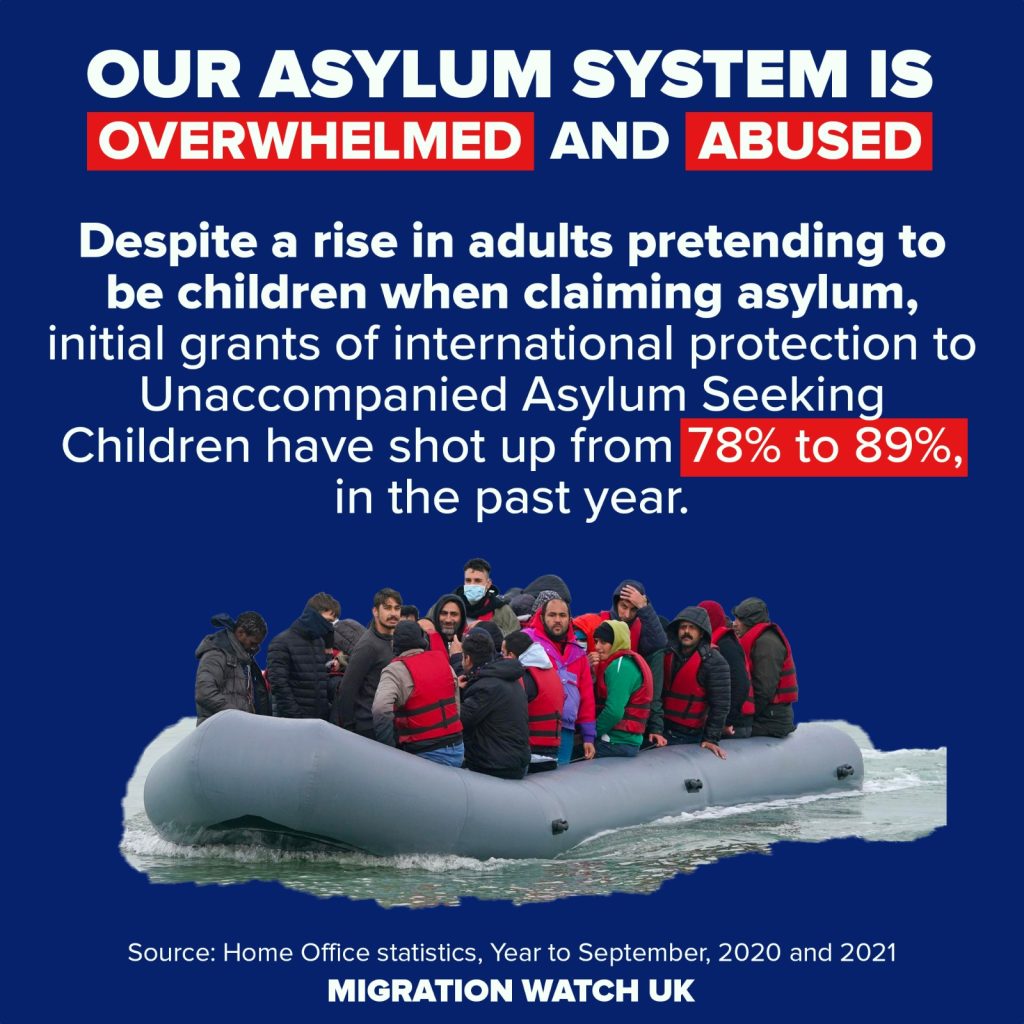Official statistics show that over half of asylum seekers whose age was checked after they claimed to be under 18 were found to be adults between Q2 2016 and Q2 2020. That is just under 1,600 out of 3,100 cases.
Ahmed Hassan, the Parsons Green Tube bomber, was one of many adult migrants who lied about their age.
Under present rules, an asylum seeker claiming to be a child who “appears to be under 25” has to be treated as a minor until the age verification process is completed. However, under new legislation proposed by the Home Secretary, which is set to be introduced to parliament next month, this requirement will be reduced to include only those who “appear to be under 18”.

There is no agreed method of confirming the age of an individual that we have in UK law. However, the existent two-stage process is as follows.
- At the first stage, Home Office staff make an initial assessment. If the person claiming to be a UASC is obviously over 25, the person is not classed as a minor.
- At the second stage, where the person is not obviously over 25, the applicant undergoes an age check (known as a Merton assessment). This means that two social workers independently attempt to verify the age of the applicant over a two-day period.
Concerns about exploitation of child migrant rules grew since 2016 when the UK witnessed the admission of a number of applicants from Calais refugee camps who claimed to be children but appeared to be much older.
In 2017 ex-Border Force boss Tony Smith said: “Some would’ve sworn on their mums’ lives they were 16 despite having a beard and balding.”
The scale of the initial deception is staggering. The danger of mature adults having free access to groups of genuine children are obvious.
Even more shocking is the thought that those judged to be one or two years older than 18 being are given the benefit of the doubt.
The government has to be more open about how young men, for that’s what they mostly are, are age assessed, so that we can judge the potential risks ourselves.
Grilled by Tory Laura Farris about the way people are given ‘the benefit of the doubt’ in initial assessments, Mr Philp said on 2 December 2020: “One of the areas we are looking at closely is whether we can legislate just to clarify better in statute how these age assessment processes work, just to remove some of the ambiguity that currently exists.”
“Of course the risk goes both ways, because lawyers representing people say ”it’s very risky if you take someone who is under 18 and accidentally say they are over 18” – which is obviously true.
“(But) equally, if you take someone who is significantly over 18 and put them in a school, that itself has very significant safeguarding risks. So these risks are two-way and sometimes in the commentary we hear about this the second of those risks is not adequately taken into account” (watch the full evidence session before the Committee).
The truth is that there is a huge incentive for asylum abuse here.
Asylum grant rates for those determined to be unaccompanied minors are higher than for other applicants.
Minors can also get more support.
We need more robust safeguards to detect and stop this kind of deception.
The current method of checking age by relying on the say-so of social workers is not reliable enough.
NB Last year the UK received more than 3,500 people who were deemed to be unaccompanied asylum seeking children, the highest number of any country in Europe (see Hansard debate, September 2020).
